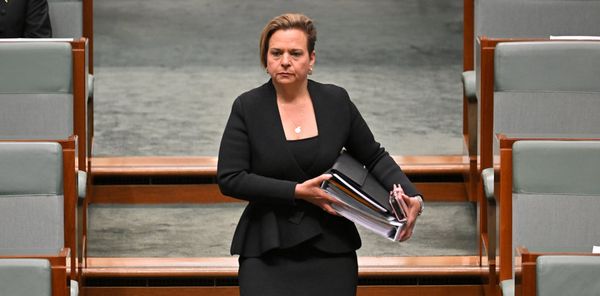
So, with F1 having approved plans on Tuesday for an overhaul of its sprint race weekend format, teams will be studying the revised regulations to ensure that they are on the front foot and ready to go into battle in Baku this weekend.
While the FIA has announced outlines for the revised sprint weekend format – which includes the new Sprint Shootout qualifying session – it is the formal publication of updated sporting regulations that has offered a proper idea of the complications and quirks to expect.
Here is a run-down of the most important aspects before the first experience of the new format.
Sprint Shootout is effectively one shot qualifying
The switch to make the Saturdays of sprint weekends totally standalone has been triggered by the desire to make that morning’s action a qualifying session rather than practice.
F1 had been juggling how best to work a qualifying session though, because of issues over the number of tyre sets available and worries about extended engine mileage if power units had to be pushed harder for longer.
The favoured solution has been a compressed Q1/Q2/Q3 qualifying format, with the three sessions running for 12 minutes, 10 minutes and eight minutes (compared to 18/15/12 normally).
While at first glance the new format seems to be just a more intense version of what we have right now, it is the tyre rules surrounding it that will make it a different beast.

The new rules stipulate that for SQ1 and SQ2 (as the new sprint shootout qualifying sessions have been labelled), drivers can only use medium tyres, and for the final session just a soft.
However, more crucially, the regulations are specific in stating that drivers can only use a single ‘new set’ of such specification in each segment.
This effectively means that there is no opportunity for drivers to get a banker lap on an old set early on. Plus, if they mess up their proper qualifying effort, there won’t be a second chance to go on fresh rubber and make amends.
PLUS: The winners and losers from F1's new sprint format
Even though the sessions are long enough for drivers to get more than a single run in, the reality of peak tyre performance coming on the first lap means drivers know there will be just one lap to nail that qualifying time.
Parc ferme is still as strict as ever
While the Saturdays of sprint weekends are now completely standalone in terms of them having no impact on the grid for Sunday, it does not mean teams and drivers are totally free of their shackles. In a bid to reduce costs, F1 for many years has had a perc ferme rule in place so that settings are pretty much locked-in from qualifying to the race.
This regulation will remain in force for the new sprint weekends as well – with suspension set-up sheets and components frozen as soon as the car leaves the pitlane from qualifying on Friday.

Tweaks to the rules are explicit that any changes made to the settings before the start of the sprint race mean that the car must start from the back of the grid for the Saturday race as well as Sunday’s main event.
Driver swaps can come after qualifying
Formula 1 has always operated under the rules that drivers can only take part in a grand prix if they have qualified (or at the very least set a representative time in practice).
This is why reserve drivers often head home on Saturday nights because once qualifying has finished then there is no chance of them being called in to action – even if teams would want them to be.
The new sprint weekend format has opened up a slight change of scenario though because of the way that qualifying is so early, and the sprint does not count for the grid.
For now on, should a driver be unable to carry on after qualifying on Friday, then the revised rules open the door for a replacement to be drafted in for the sprint day – and so then, in theory, start from the back of the grid for the main race.
The regulations say: “A change of driver may be made at any time before the start of the sprint shootout at each Competition where a sprint session is scheduled, or at any time before the start of the qualifying practice session at each Competition where a sprint session is not scheduled, provided any change proposed after the end of initial scrutineering receives the consent of the stewards. Additional changes for reasons of force majeure will be considered separately.”

It is not impossible, therefore, that a driver qualifies on Friday, is unwell so misses Saturday and a replacement is drafted in, before he is fit enough to return to take up his rightful grid spot on Sunday.
Penalty hangovers
One of the reasons behind F1’s push to make Saturday a complete standalone was to encourage drivers to push harder in the sprint race without fear of losing grid spots. But while drivers will indeed face less downside to taking risks on Saturday, they will not be able to act without impunity if they do things recklessly.
The regulations make it clear that, while the sprint race result will not decide the grid for the grand prix, any penalties earned in them will count for Sundays. That means offences like causing a collision in the sprint could trigger a grid penalty for the race.
A revised 37.4 of F1’s sporting regulations states that: “Any such grid position penalties will be served in the race, unless the driving infringement occurred in the sprint shootout qualifying session, in which case such penalty will be applied to the grid of the sprint session.”
FIA leaves door open for emergency tweaks
While the shake-up of the sprint weekend format has been heavily debated among teams and F1 chiefs to try to ensure there are no unintended consequences, it cannot be ruled out that something has been overlooked.

The new format changes are enshrined in the F1 Sporting Regulations, and the process to make tweaks can be quite long-winded if it is found something is not quite right. Even minor tweaks need approval of the F1 Commission, and then ratification by the FIA’s World Motor Sport Council.
The FIA is well aware of this, so it has left the door open to allowing itself to make emergency changes on a specific race weekend without going through the traditional process.
Up until 1 August - or after the Belgian GP, the third of six sprint race weekends in 2023 - it has allowed itself to make temporary tweaks to the rules regarding driver penalties, the weekend format, parc ferme rules and the formation of the grid if deemed necessary.
This can only be done, however, with the agreement of the FIA, F1’s commercial rights holder and eight of the 10 teams.
Furthermore, it states such changes must address “unintended issues” from the new rules, must ensure sporting fairness and may only apply to the individual event during which the problems arose.







